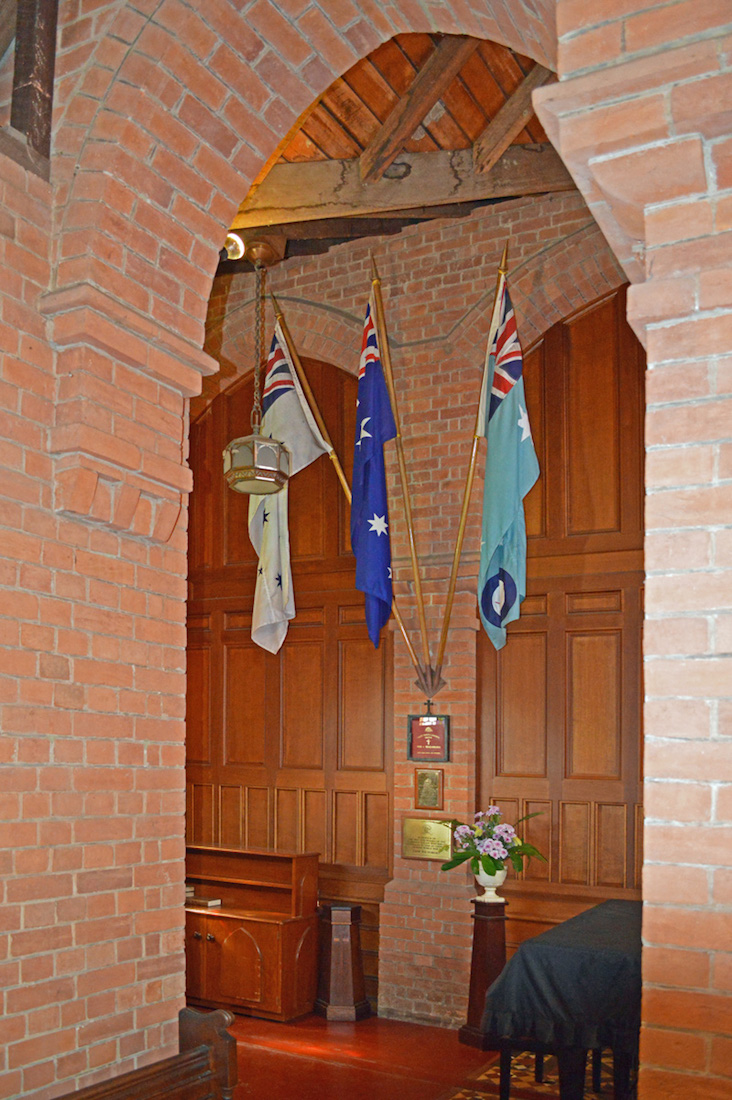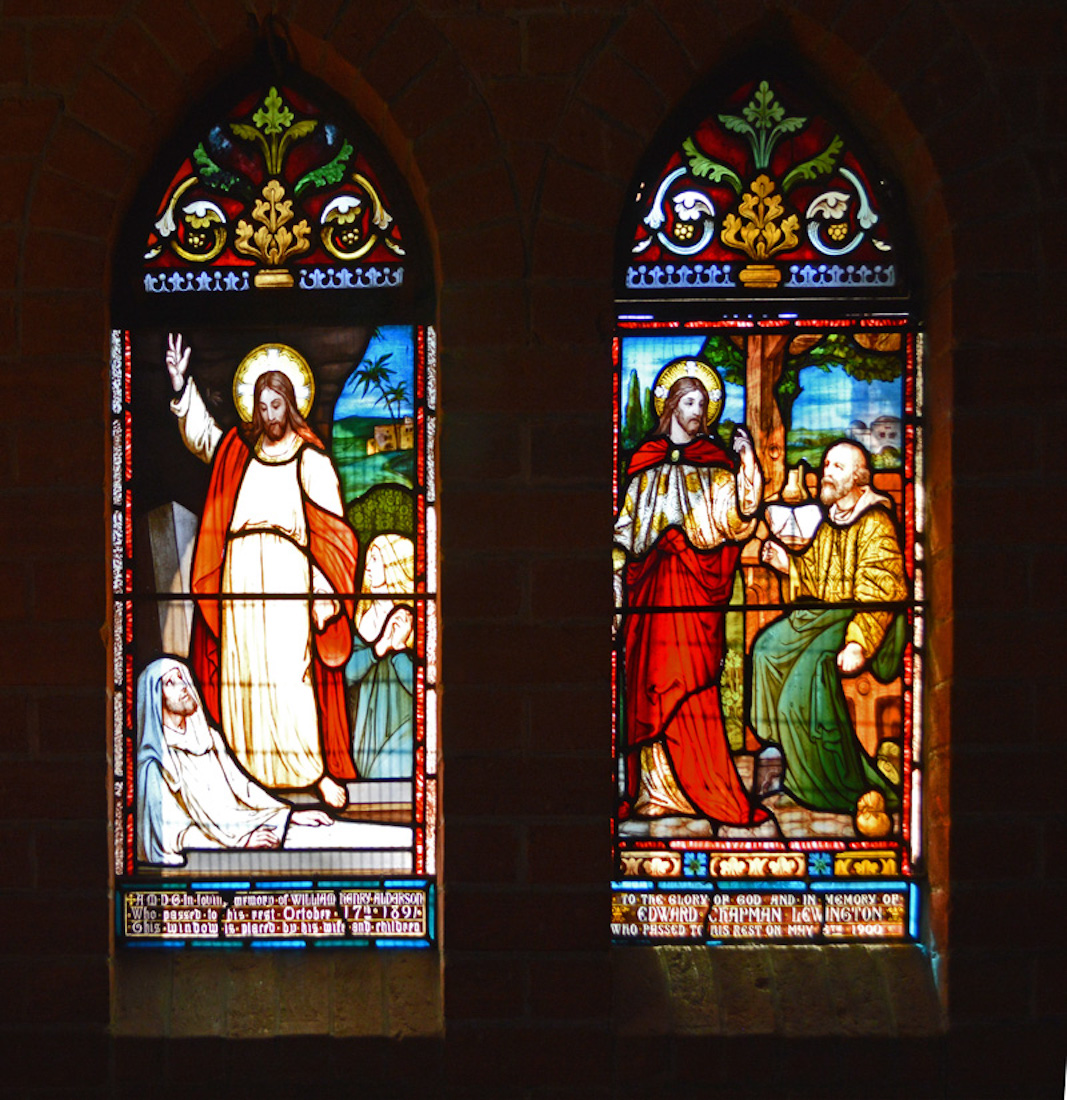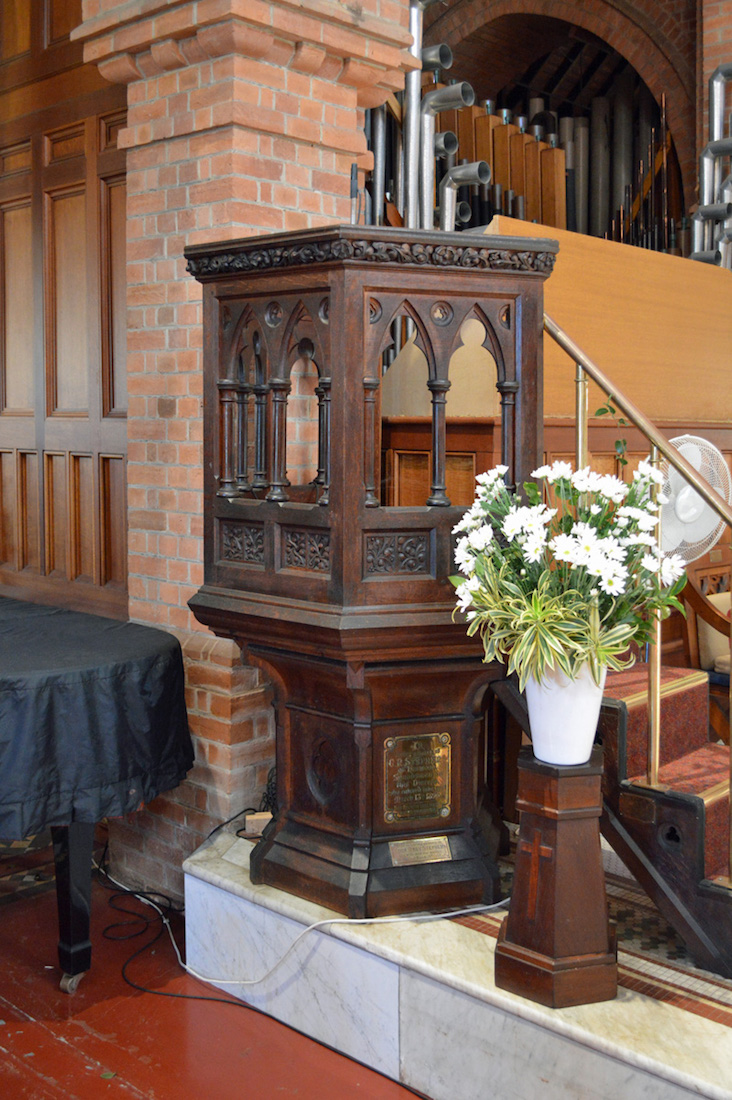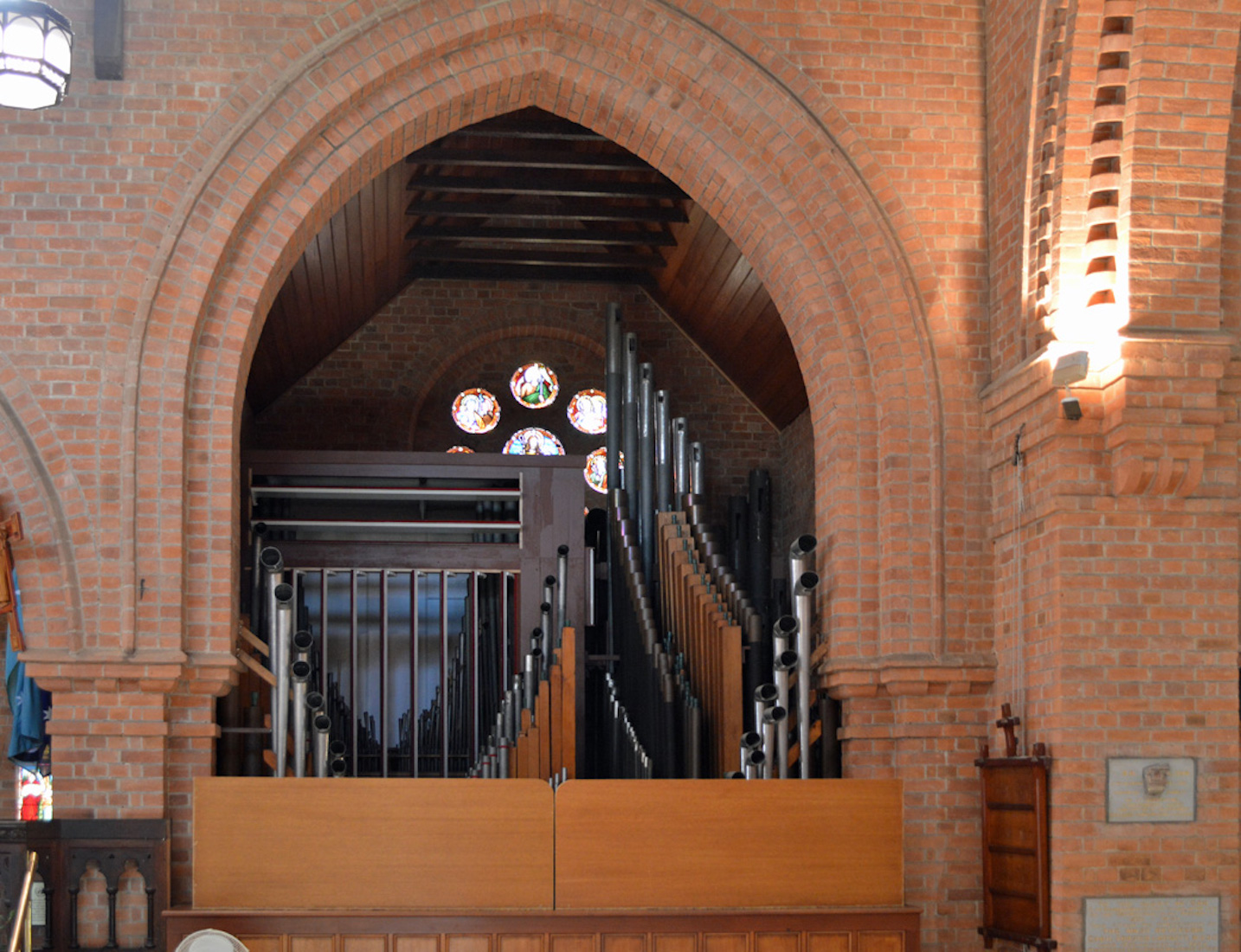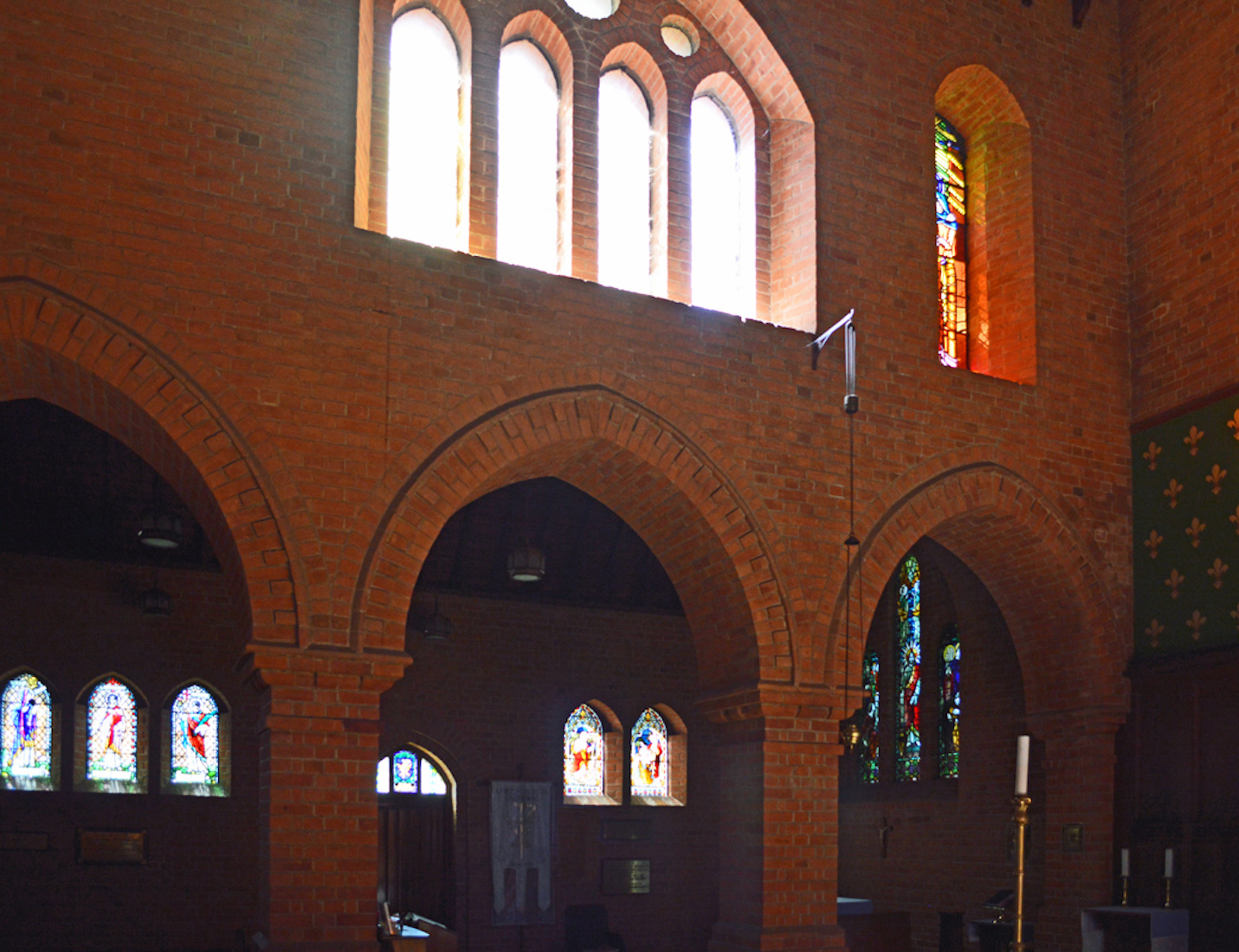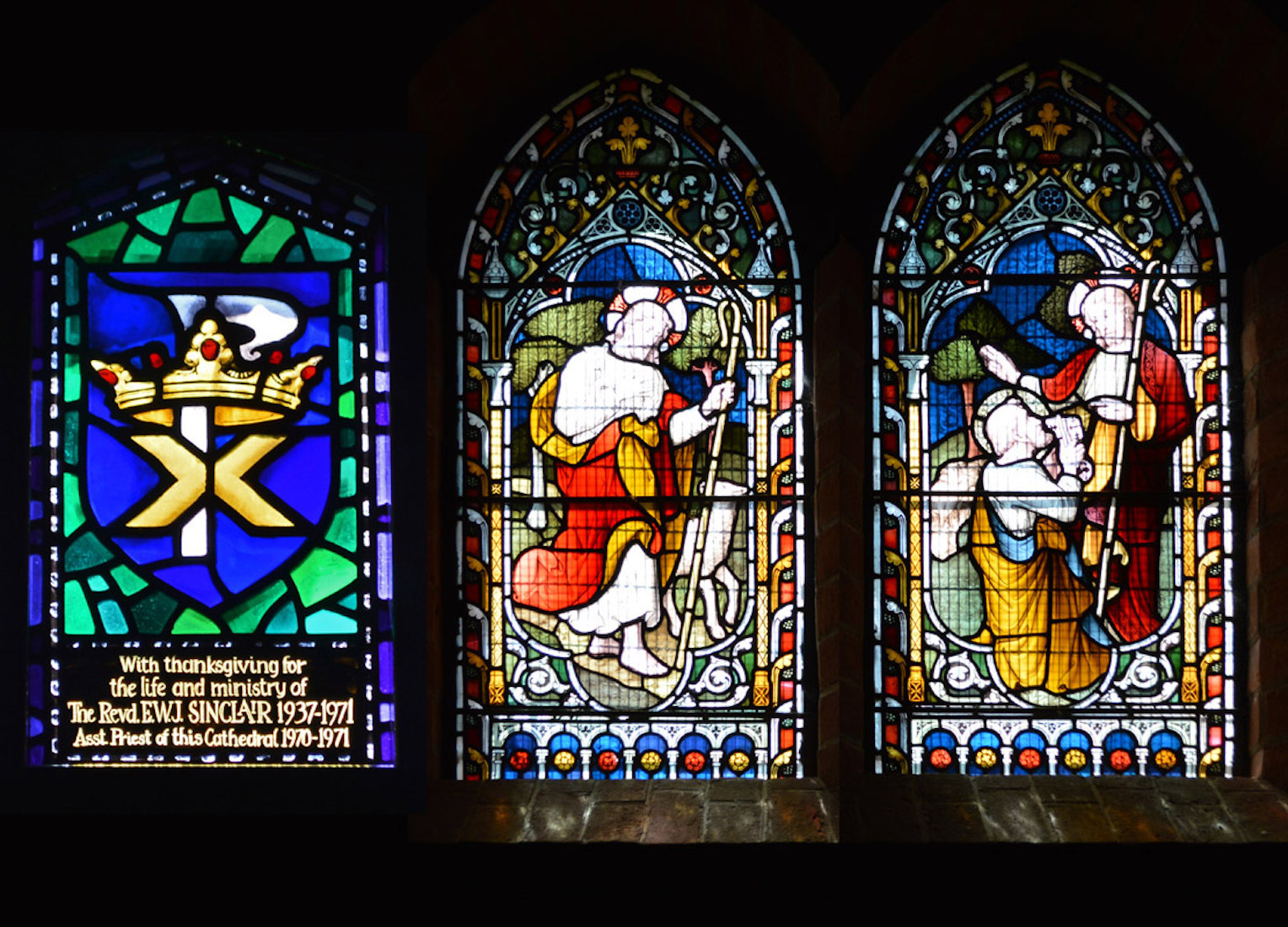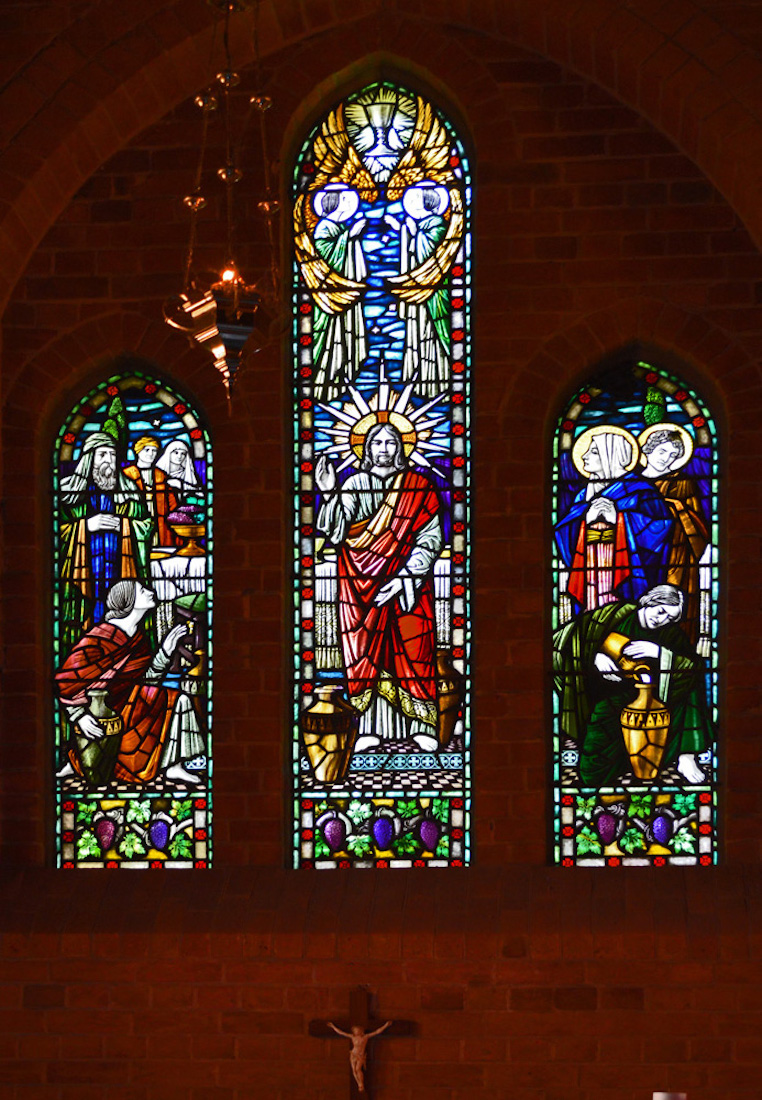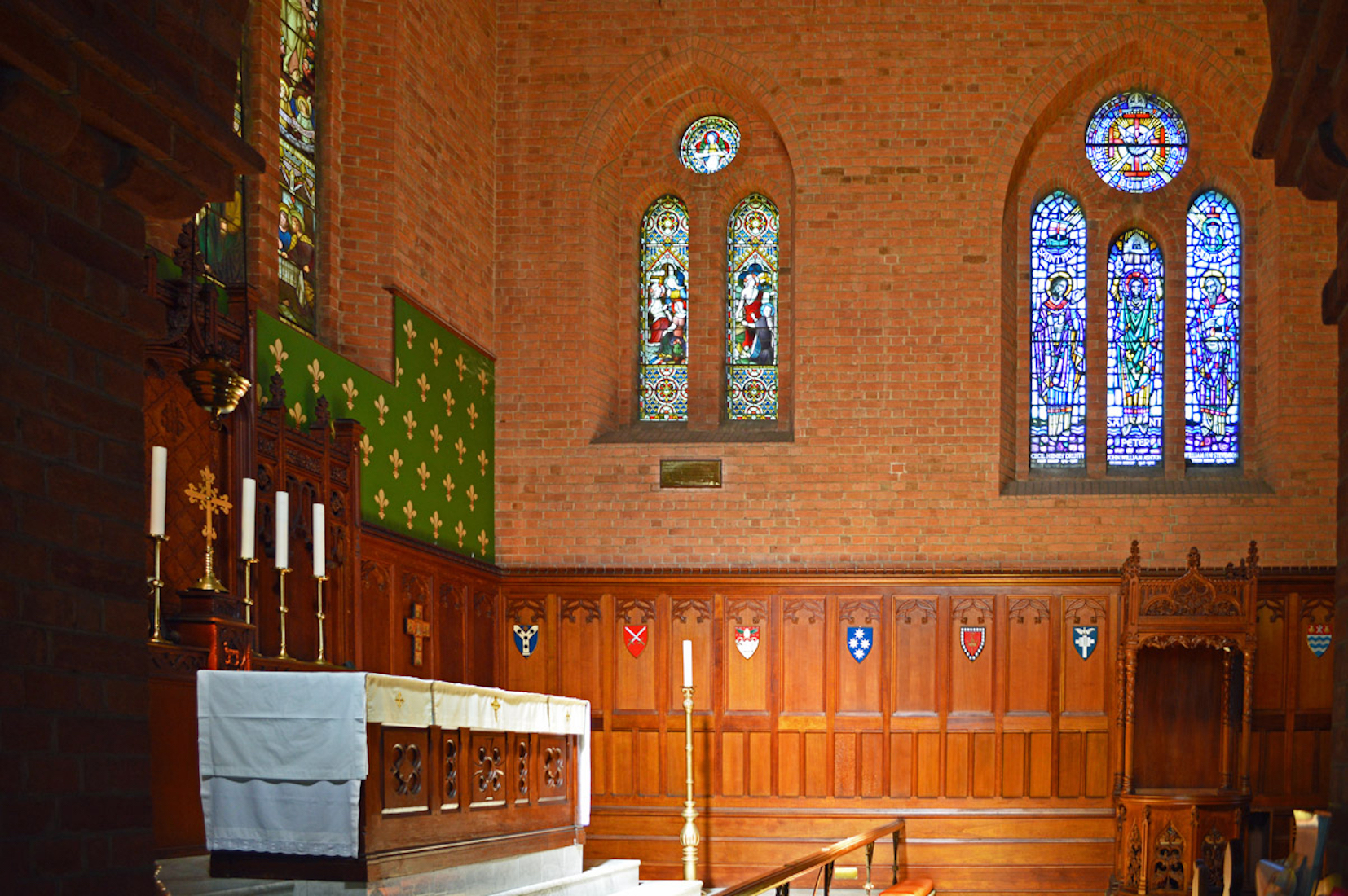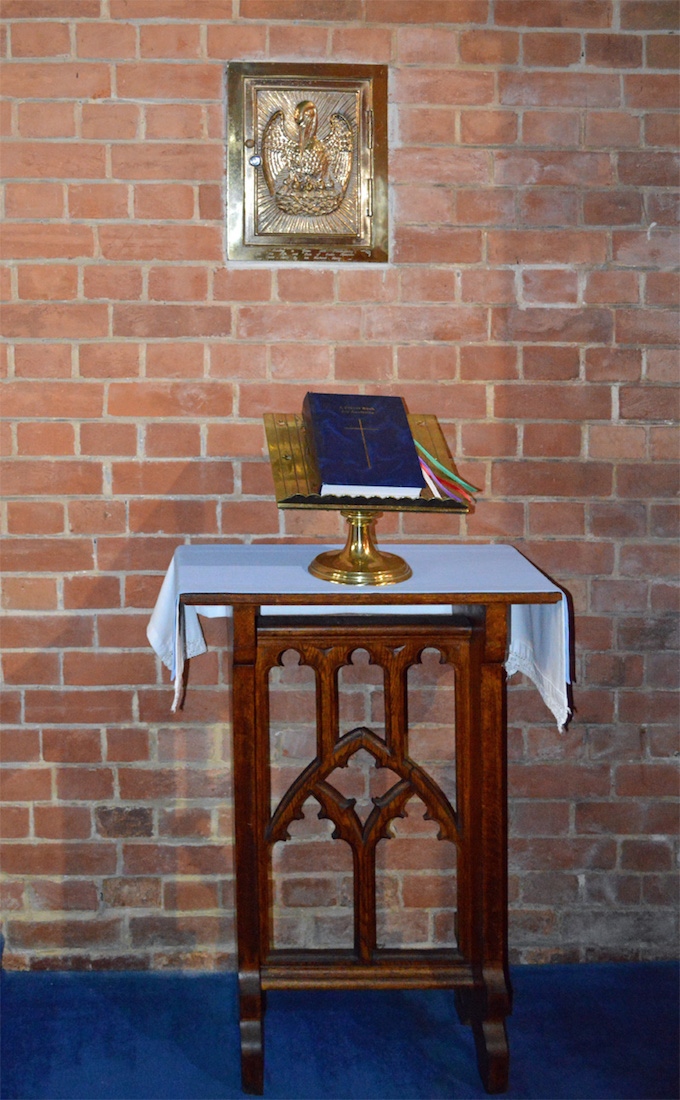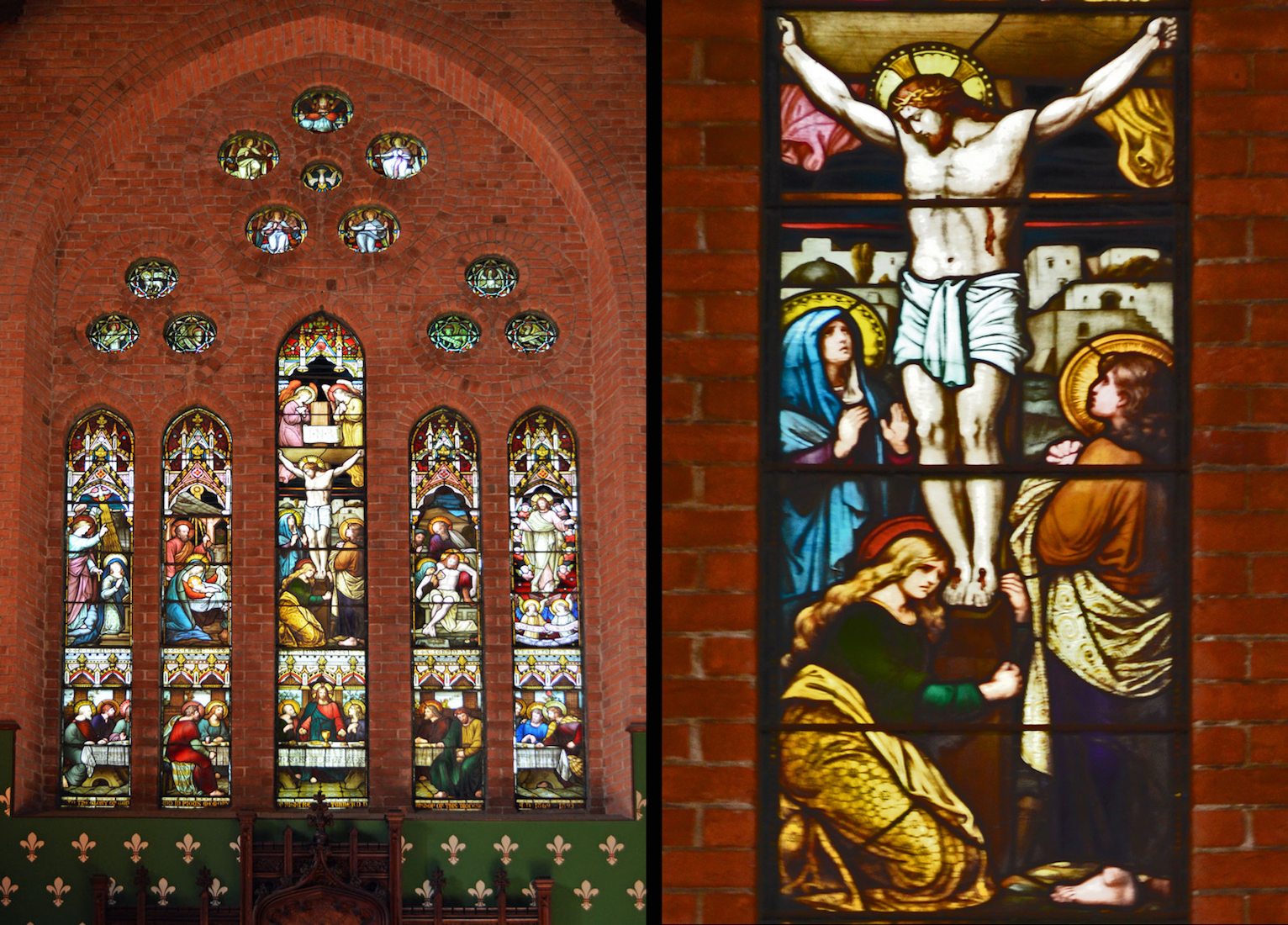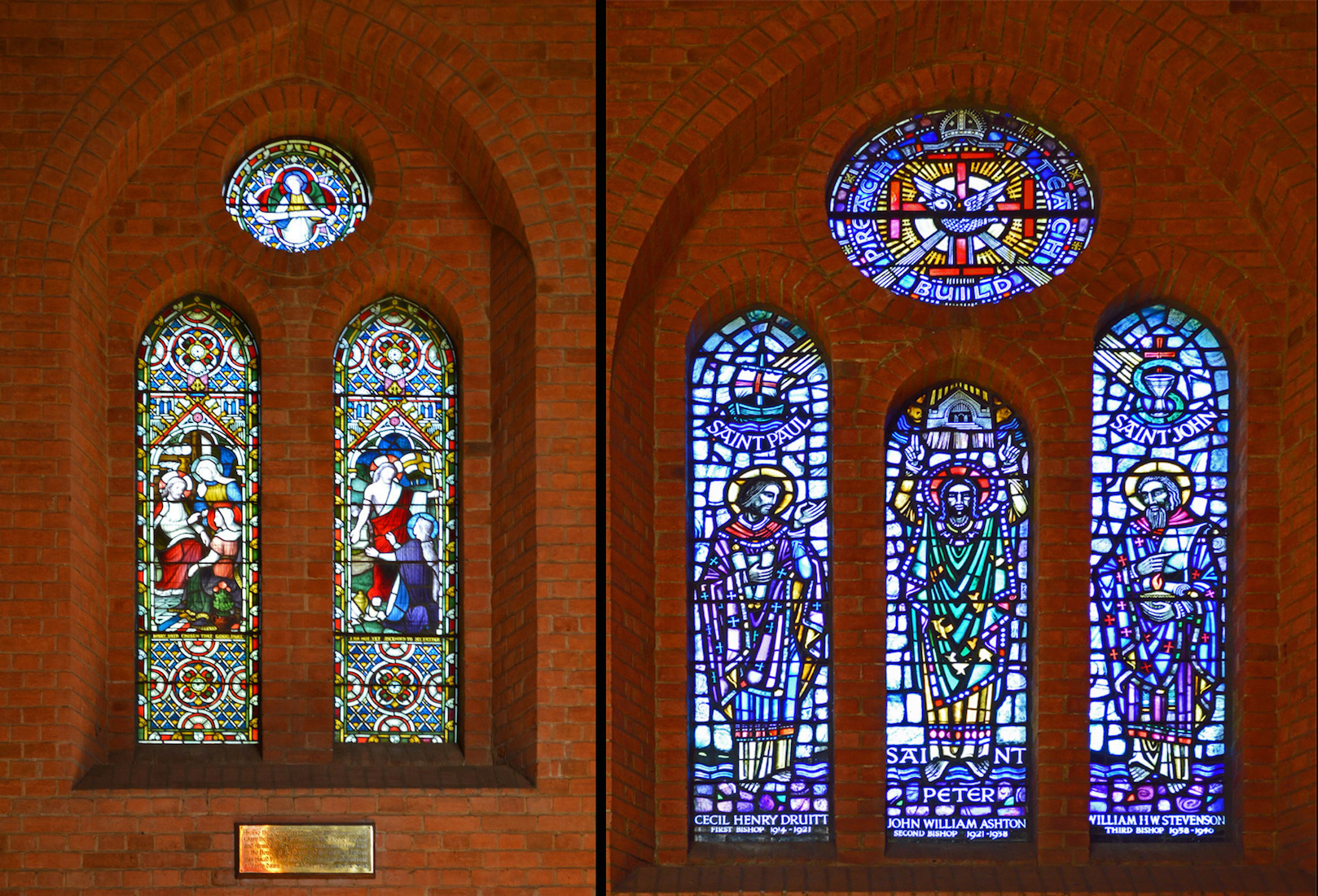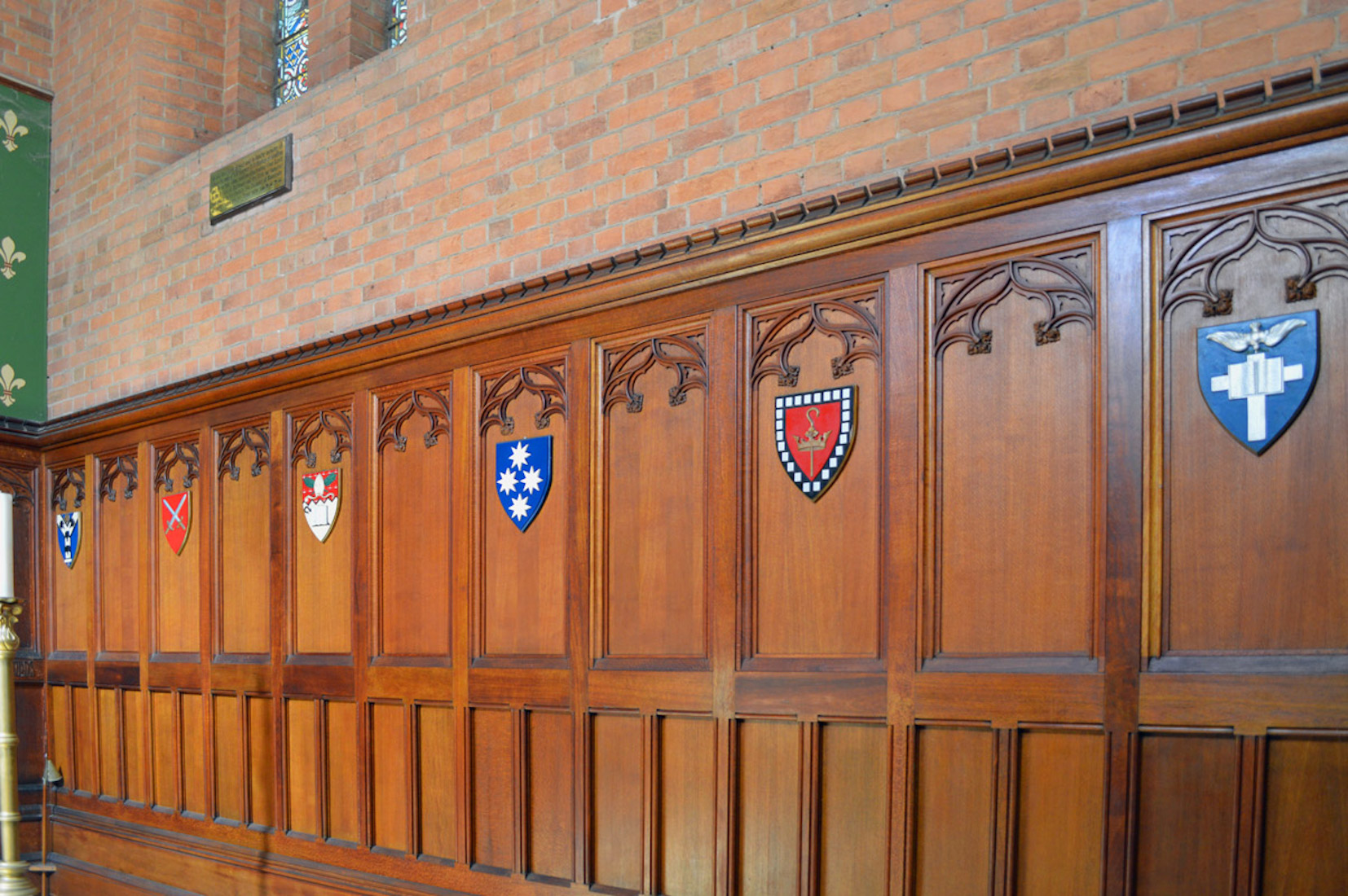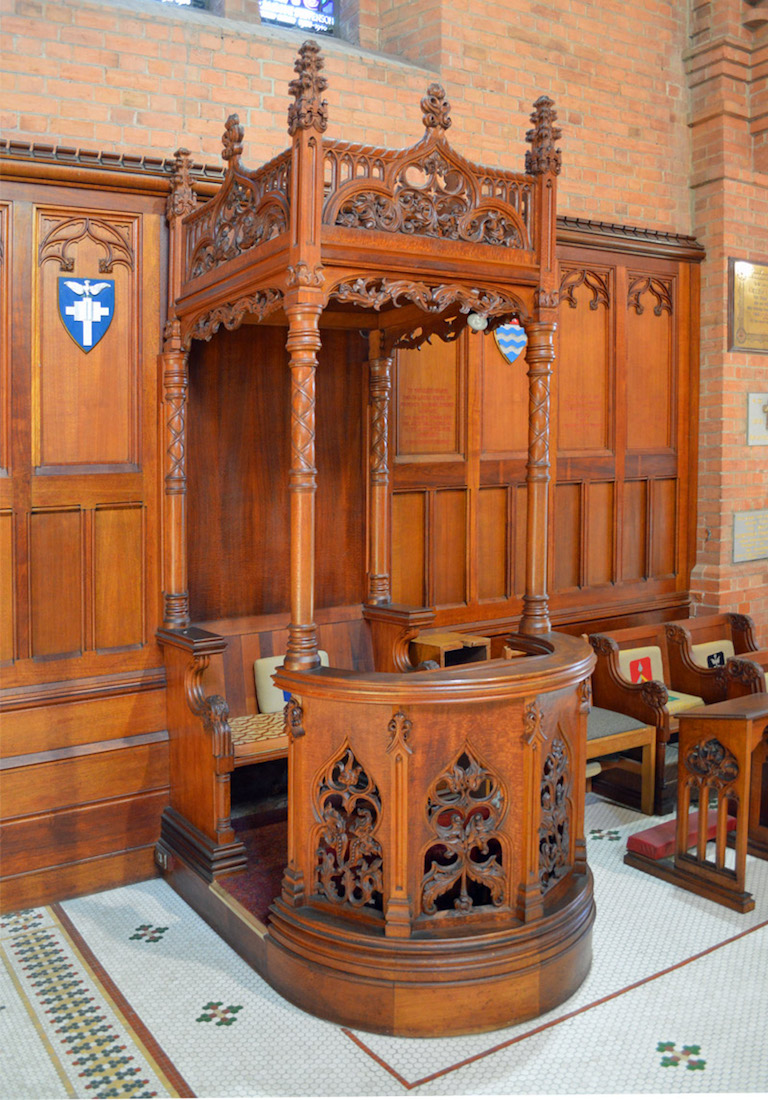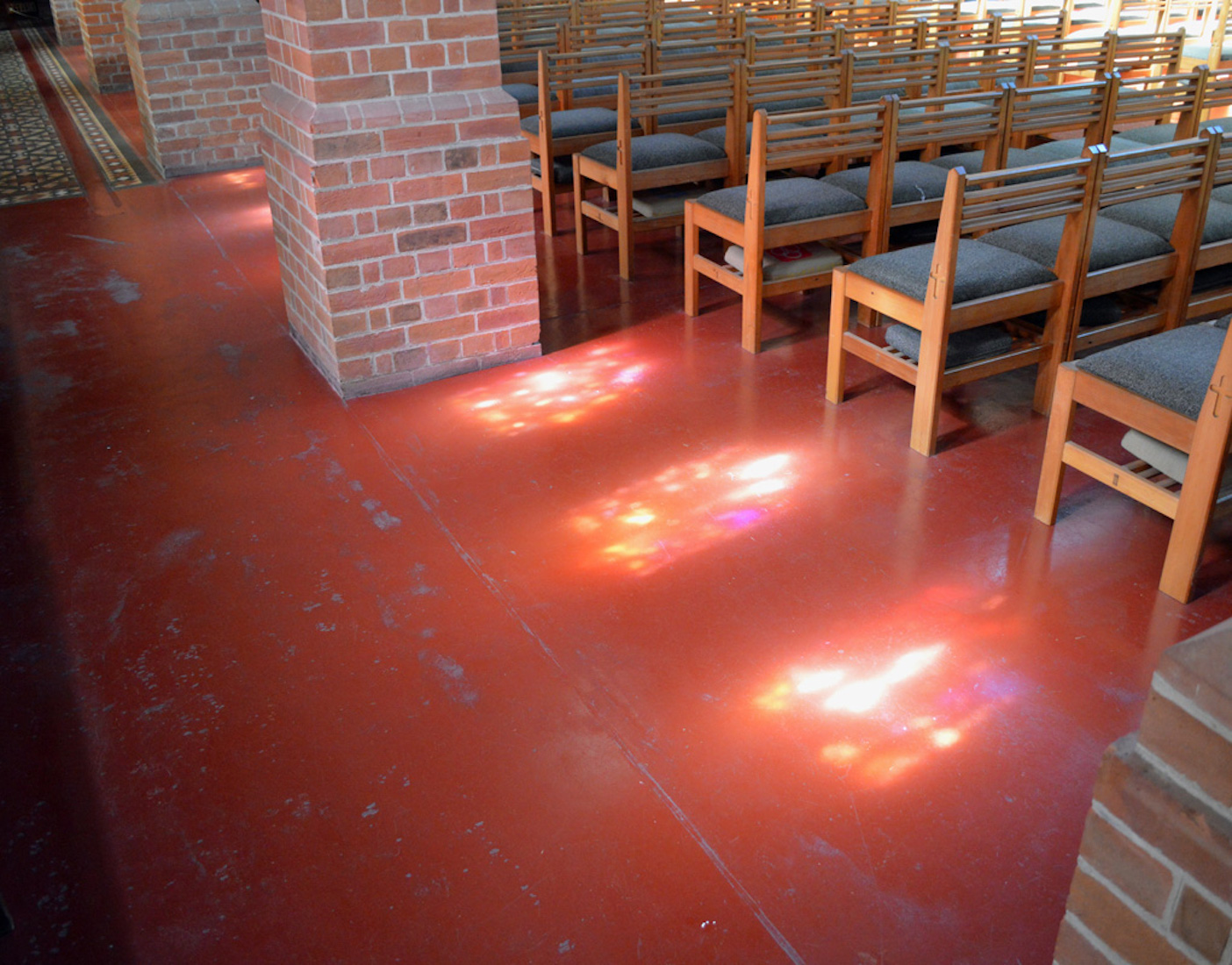
This is a fun photograph. But if you visit a cathedral, you expect to see the light of the Lord! PLAN
22. NORTH NAVE WINDOWS
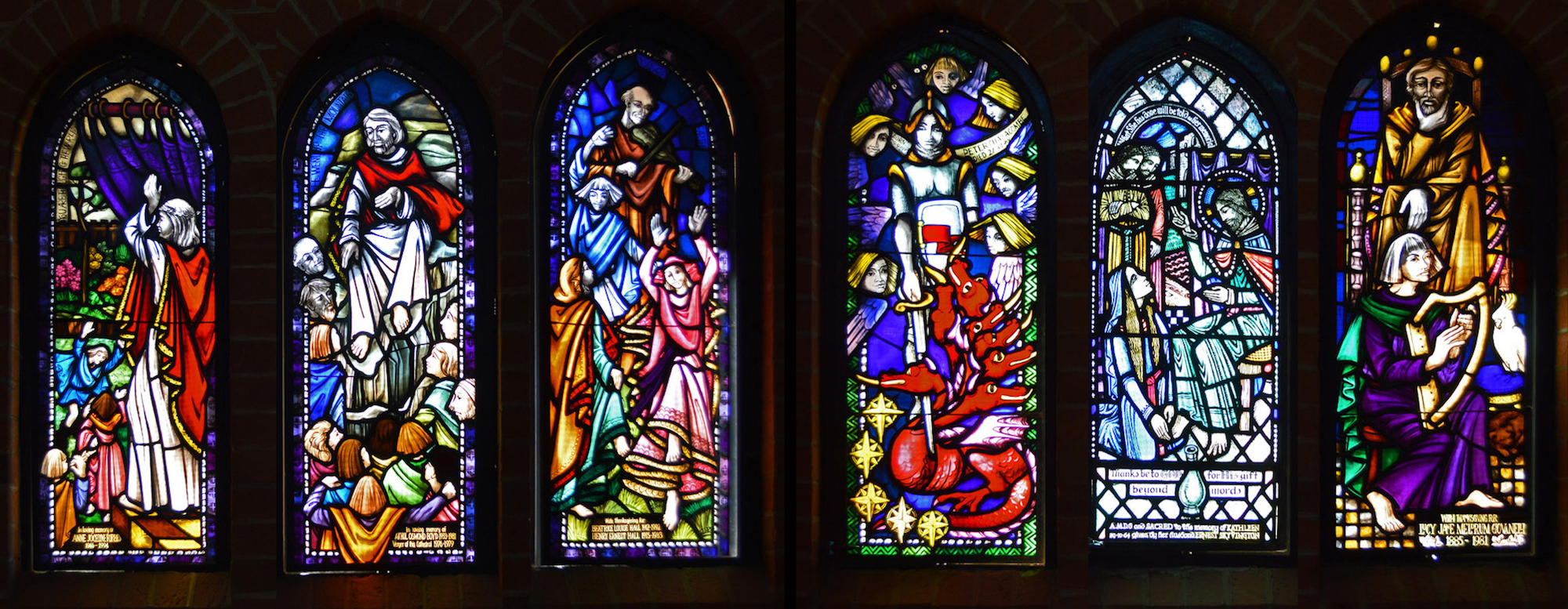
The second group of windows from the West on the North wall illustrate the Sermon on the Mount. The topics are written at the top of each window. We have from left to right: • ‘You are the light of the world.’ (Matt 5:14); • He went up the mountain. (Matt 5:10); • You are the salt of the earth (Matt 5:13) (pictures a violinist and children dancing). The windows remember Anne Jocelyne Forbes (1946 – 1994); Athol Osmond Boyd (1933 – 1981), Verger of the Cathedral (1976 – 1979); Beatrice Louise Hall (1912 – 1992); Henry Ernest Hall (1915 – 1983). • The central windows on the North wall appear to have no common theme nor style. They depict from left to right: • St Michael and the beast (Rev 12:1) – St Michael the Archangel slaying the dragon. • What she has done will be told as her memorial (Matt 26:13) – the pouring of precious ointment upon the head of Christ. • David playing the harp to Saul. The windows were given in memory of Peter Challacombe (29.9.1952 – 27.3.1980); Kathleen (20.10.64), wife of Ernest Sky Vington; Lucy Jane Meldrum Govanelli (1885 – 1981).
23. NORTH NAVE WINDOWS
This set of windows on the North wall is the fourth from the West. These were part of the first stage of the Cathedral, and we notice that the style is quite different. The three scenes depicted are from left: • Our Lady and the Infant Jesus; • Jesus in the temple courts (Lk 2:46); • Jesus giving Peter the Keys of the Kingdom (Matt 16:18). The windows are in memory of Albert Harold Fawcett, At Rest 18th Dec 1914 aged 11 years; Albert Emanuel Schwingbaumer, At Rest 17th Jan 1919 aged 31 years; Albert Emanuel Schwingbaumer, At Rest 26th Sept 1923 aged 63 years. • The Easternmost windows on the North aisle depict: • Jesus healing Jairus’ daughter (Mk 5:22); • Ruth and Boaz (Ruth 2:8); • The Sower (Matt 13:18). The windows are in memory of: Henrietta Sybil Schwingbaumer Burghardy, At Rest 27th Dec 1918, Aged 80 years; Jane Matilda Gosper who died Nov 30th 1907, Erected by her children; Henry Gosper who died Nov 29th 1904, Erected by his widow and children.
24. NORTH TRANSEPT
Leaving the North aisle we come to the small Western portion of the North transept, set apart for War memorabilia. Here we find plaques commemorating the Korean and Vietnam war veterans, the Book of Remembrance of those Anglicans from Grafton and District who served in the Great War, and the Union Jack flag, taken into battle by the 42nd Battalion AIF, which was hung in the Cathedral on Anzac Day 1930.
25. NORTH TRANSEPT WINDOWS
There is a window on the North wall of the North transept. The two panels depict: • Jesus raising Lazarus from the dead (Jn 11:11); • The calling of Levi (Mark 2:14). Each window has an inscription below: • In memory of William Henry Alderson Who passed to his rest October 17th 1891 This window is placed by his wife and children; • To the glory of God and in memory of Edward Chapman Lewington who passed to his rest on May 8th 1900.
26. PULPIT
As we leave the North transept, we pass the carved wooden pulpit. This was given in memory of G. N. Stephens who died March 13th, 1890. The smaller plaque says that it was also given in loving memory of Anna Mary Stephens, his wife and our mother, who died March 24th 1938.
27. ORGAN
The larger Eastern section of the North transept is used as an organ loft. The pipe organ was originally built in 1904 by Norman and Beard for the Royal College of Organists, London. It was redesigned and rebuilt by Hill, Norman and Beard in 1967. The Cathedral purchased it and brought it to Australia in 1990 where it was re-erected in 1992 by Peter Jewkes. Behind the organ is the Good Shepherd rose window, which is unfortunately largely hidden. The centre of the rose depicts Jesus as the Good Shepherd, the upper window John the Baptist, and the other windows depict the twelve apostles.
28. STONES
On the column just East of the North Transept, there is embedded a stone fragment ca 1100 AD from St Augustine’s Abbey, Canterbury, which was set here in 1959.
29. CHAPEL OF THE EPIPHANY
From our position now in the chancel, we look across to the Northeast corner of the Cathedral to the Chapel of the Epiphany. More stained glass windows! And above, we have the light streaming into the sanctuary through these clear windows, and next to them a brightly coloured modern window called ‘Abraham and Sarah’. This was placed in the Cathedral during the restoration of 1984.
30. CHAPEL WINDOWS
The Westernmost window of the Chapel shows from right to left Faith – St John, Love – Jesus, and Hope – the Virgin Mary (1 Cor 13). Little banners with ‘Faith’, ‘Love’, ‘Hope’ are placed at the tops of the windows. The windows were erected in memory of John and Frances Crispin, Wilford Johnson who died 21.7.27, and Louisa Small who died 19.7.28.
31. CHAPEL WINDOWS
We have grouped together here two lots of windows from the Chapel of the Epiphany. At left is a small Chi-Rho window above the small Northern door. The Chi Rho is composed of the first two letters of the Greek word XPICTOC meaning Christ. The crown signifies that Christ is King. The two panes at right picture ‘Jesus the Good Shepherd’ (Jn 10:14) and ‘Jesus and Peter’ (Matt 16:18). Unusually, there are no inscriptions on these windows.
32. CHAPEL WINDOW
The window above the chapel altar depicts the miracle at the wedding of Cana (Jn 2:1) when Jesus turns the water into wine. The miracle revealed Jesus’ glory, and his disciples then put their faith in him.
33. SANCTUARY
Our attention now turns towards the main sanctuary. The high altar is on the left with the East window above. On the East wall beyond the altar we see an icon, and just around the column at left, and out of sight are two aumbries. Facing us are two windows on the South wall, and below them is a row of coats of arms, and the bishop’s cathedra at right.
34. AUMBRY
The gold aumbry in the East wall ... . One of the aumbries is used for keeping sacred oils, and one for the reserved sacrament.
35. ALTAR
The high altar is placed close to the East wall. The reredos behind was erected in 1910 in memory of Archdeacon Robert Julius Moxon, Rector of Grafton Parish.
36. EAST WINDOW
The foot of the remarkable high altar window portrays the Last Supper with the twelve disciples seated at the table. Judas, the betrayer, without a halo, is hanging his head, holding the bag of silver coins. The five panels above this from left to right are the Annunciation (Lk 1:28), the Nativity (Lk 2:11) the Crucifixion of Jesus (Jn 19:25), taking Jesus down from the Cross (Jn 19:33), and the Ascension (Acts 1:11). The lowest four circular windows are the Four Evangelists, and above them are a dove representing the Holy Spirit, and a pelican, representing our spiritual feeding from Jesus. At top centre, we see Jesus seated on the throne of glory, with four archangels below, and the dove at centre.
37. ICON CROSS
This Icon on the East wall is a relatively new acquisition by the Cathedral. It came from Jerusalem. I understand that the Bishop took it with him on a tour of the churches of the Diocese in 2008.
38. SANCTUARY WINDOWS
This window is found on the South wall of the sanctuary. We notice that because of the Chapel of the Epiphany, the window arrangement in the sanctuary is quite asymmetric. This window shows two scenes. At left we have • ‘Mary hath chosen that good part’ (Lk 10:41). And at right: • ‘I am not yet ascended to my Father’ (Jn 20:17). • The next adjacent window is in the chancel or quire area. The panels are labelled Saint Paul, Saint Peter and Saint John, but feature the first three Bishops of Grafton: Cecil Henry Druitt, John William Ashton and William H.V. Stevenson. In the St Peter window, the Cathedral West Wall can be seen. These windows were designed and crafted by David Saunders, and were dedicated in September 1964.
39. COATS OF ARMS
On the South wall of the sanctuary is an interesting row of coats of arms which give an Anglican history relating to the Grafton Diocese. At left is the coat of arms of Canterbury, initially responsible for the Anglican Church. In time this split in two, sharing duties with London. With the development of the colonies, Australia came under the Diocese of India, before later becoming independent. There followed the Diocese of Sydney, and then Newcastle (at right).
40. CATHEDRA
The Anglican history is interrupted by the bishop’s throne or cathedra. The siting of the cathedra in a particular church is what makes that church a Cathedral – it is where the Bishop of the Diocese is installed. Beyond the cathedra is a final coat of arms – that of Armidale-Grafton.



